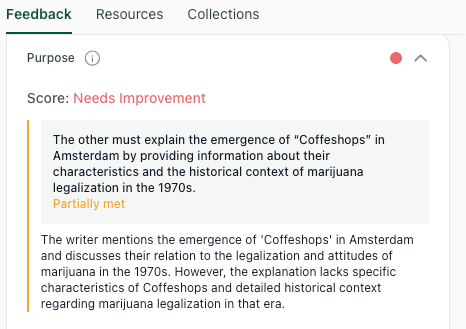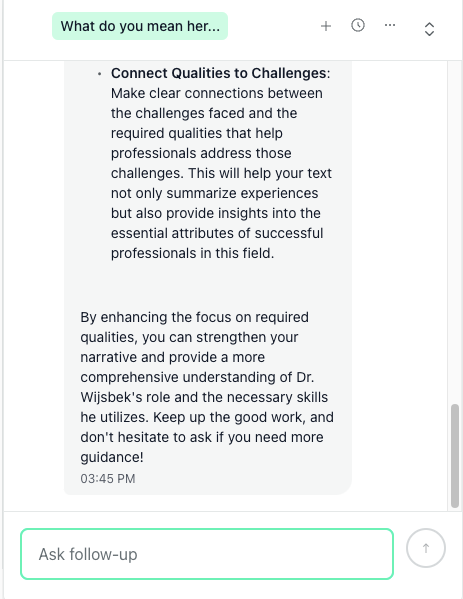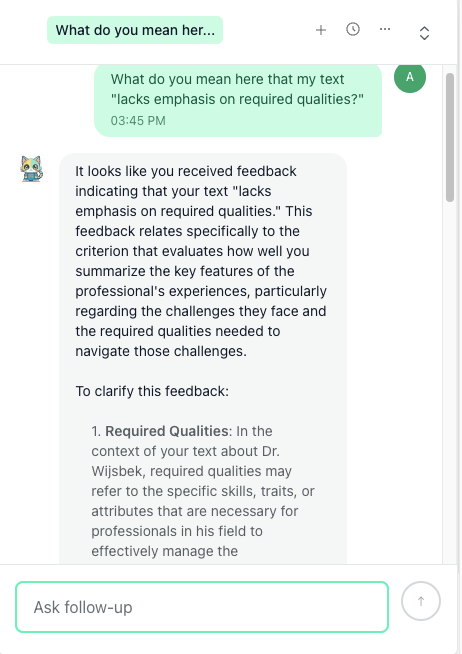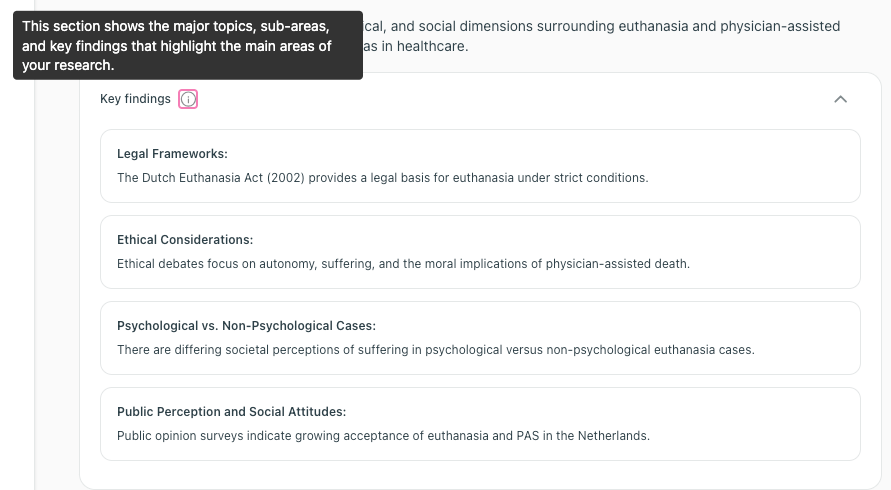tW: Simple Audit Trail for AI Use
Run a quick, policy-safe workflow to record prompts, edits, and image provenance. Use a 10 minute preflight and copy-ready disclosure lines.
Proof You Can Show: AI Logs, Disclosures, and a 10-Minute Checklist
In this edition of thesify Weekly, we focus on making your AI use verifiable in minutes, not hours. You will set up a simple audit trail that records prompts and edits, then plug in clear disclosure lines that travel from coursework to journals. This week’s blog walks through 2025 AI policies in academic publishing and gives you a pre-submission checklist that covers authorship, disclosure, figures, and peer review boundaries, so your process is both efficient and compliant.
This Week at thesify: Share How You Research, Write, and Show Your Work
We are learning where thesify should focus to support policy-aware writing, from reading and drafting to moments when you need to “show your work.” Our 3-minute survey asks about your role and field, your common bottlenecks, where you look for updates, and the tools you rely on. Your answers help us understand real workflows so we can prioritize what matters most to you.
This Week’s Blog: AI Policies in Academic Publishing 2025: Guide & Checklist
We distilled 2025 rules from Elsevier, Springer Nature, Wiley, Taylor & Francis, and Sage into a clear reference you can use before you submit. You will see what counts as authorship, where and how to disclose AI assistance, what is permitted for figures and images, and the limits around peer review. A compact pre-submission checklist helps you align your manuscript, logs, and disclosures without guesswork.
Your Weekly Tips: AI Use, Documented, Build a Simple Audit Trail
1) Start a prompt log that writes itself
Create one running file called “ai-log” in your project folder (txt, md, or sheet). Each time you use a tool, drop in this five-line template, then move on.
Date and tool
Purpose in one line
Prompt or action in one short snippet
What you kept or changed
Link to draft or file name
Example:
thesify flags a purpose gap, prompting you to add Coffeeshop characteristics and 1970s legalization context. Log the action in your ai-log.
Date, tool: 2025-10-08, thesify
Purpose: clarify essay’s purpose on Coffeeshops and 1970s legalization context
Prompt: “Review for purpose alignment, list missing Coffeeshop characteristics and 1970s legalization context, no new claims.”
Kept/changed: added 2 concrete characteristics, added one sentence on 1970s context, rejected unsupported claims
File: coffeeshops_essay_v2_2025-10-08.docx
Why this works: it ties your edit to specific feedback and shows exactly what changed.
2) Save one weekly snapshot, using a Theo chat
Freeze your work once this week, right after a Theo suggestion that you act on
theo suggests linking challenges to the required qualities. export a before PDF, apply the change, save a dated v2, and note it in your ai-log.
Export a quick before PDF of the section you will revise.
Apply the chat’s change, link challenges to required qualities in the text.
Save the edited file with a dated name.
Example: dr-wijsbek-profile_v1_2025-10-08.pdf (before)
dr-wijsbek-profile_v2_2025-10-08.docx (after)
Add one ai-log line:
2025-10-08, thesify chat 03:45, applied “connect qualities to challenges,” saved v2.
Why this works: a single, time-stamped before–after pair tied to a specific theo message shows provenance without clutter.
3) Write a one-line disclosure that travels
Draft one sentence as you work, then reuse it for coursework or journals.
Theo clarifies the “required qualities” feedback. record the date and scope of help, then add a one-line disclosure to your draft.
Base pattern: “Used [tool] on [date] for [scope like clarity/organization], I wrote and verified all content and citations.”
Coursework: “Used thesify chat on 2025-10-08 to clarify rubric language and edit for clarity only, I wrote and verified all content.”
Journal: “We used thesify chat on 2025-10-08 for wording and organization only, authors generated and verified all content and citations.”
Why this works: a single, consistent line satisfies disclosure across venues and matches what your log already records.
4) Run the 10-Minute Checklist before you submit
For example, using thesify SOTA to map a topic’s key findings. Log assistive use, verify sources, and add a one-line disclosure.
Policy match: paste your target venue’s AI policy link in your ai-log, confirm your use fits allowed assistive roles.
AI-log complete: last entries include date, tool, purpose, short prompt, keep or change, file name.
Snapshot pair: one before PDF plus today’s version with a dated name.
Figures tracked: each figure has source, date, license or permission, steps from raw to final, tool role.
Disclosure in text: one sentence added to the manuscript and copied into the ai-log.
Tool terms check: no training on your data for confidential text, use a campus or private account if needed.
SOTA used as map, not claims: cross-check key findings with originals and cite the sources, do not quote SOTA as evidence.
Export receipts folder: ai-log, before PDF, current file, figure sheet.
Related Resources
thesify Weekly Newsletter Archive: Catch up on any issue you missed. Explore past themes on planning, drafting, revision, and policy-aware AI use, with compact tip sets you can apply right away. Browse by title or return to a series when you are ready.
Ethical Use Cases of AI in Academic Writing: This distinction between AI-assisted writing and AI-generated writing is essential. The ethical use of AI involves supporting the learning process, enhancing efficiency, and improving writing clarity—not bypassing intellectual effort. Learn why ethical AI use matters in academia in this post.
Inside Academic Ghostwriting–Interview,Ethics & AI | thesify: Traditional plagiarism detection tools are often ineffective against AI-generated or professionally ghostwritten content, as these works typically involve original compositions tailored to specific assignments. This makes it harder for institutions to uphold academic integrity standards without significant policy shifts and technological advancements. This article discusses the ethical and legal aspects of contract cheating, using data and research to show why ghostwriting services exist and how institutions are responding. Plus watch the full video interview with a real academic ghostwriter for the uncut conversation.
Mastering the Peer Review Process: Peer review is the critical evaluation process in which experts in a given field examine the quality, accuracy, and relevance of scholarly manuscripts before publication. Essential to maintaining academic integrity, peer review ensures only high-quality research contributes to the body of academic knowledge. Whether you’re a student submitting your first paper or a seasoned researcher aiming for a high-impact journal, understanding peer review is key to publication success.
Emphasis on Academic Integrity
Unlike general-purpose AI chatbots that might generate entire essays (and tempt misuse), thesify is designed to enhance student writing while upholding integrity. Subscribe today for an AI-powered Pre-Submission Review that analyzes your draft and gives comprehensive feedback.
Need more insights? Visit our full blog archive or newsletter archive for expert advice on academic writing.
Until next time,
The thesify Team





